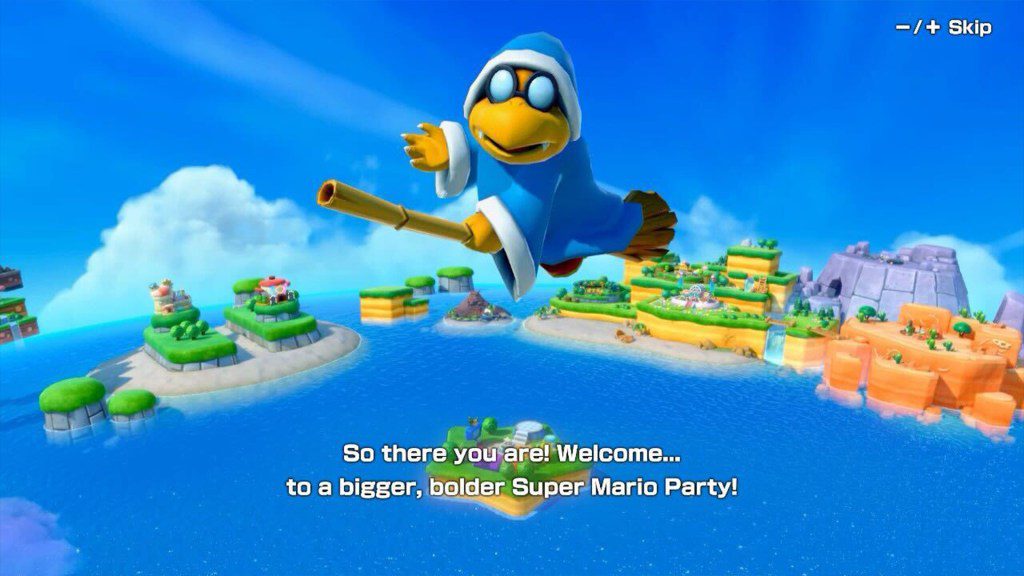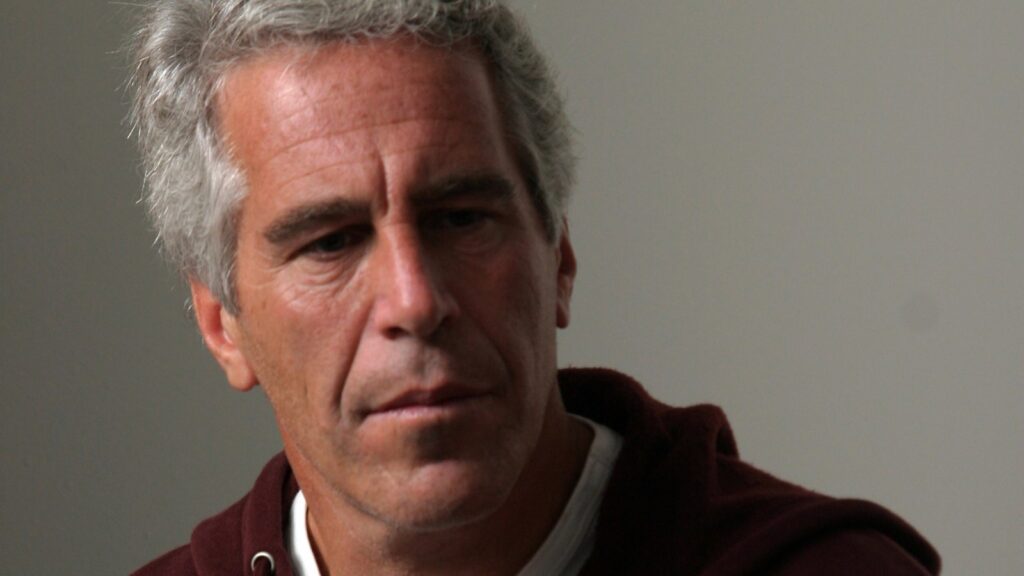‘Super Mario Party Jamboree’ Is a Rager
What makes a Mario Party worth attending? Sure, it’s great to get some friends together for an evening filled with mini-games, backstabbing, and luck-based turnarounds, but it’s been a while since the series felt relevant. Like a middle school dance, Mario Party games often feel more fun in your memory than they ever really were.
But going back to the original Nintendo 64 trilogy that began in 1998, it’s clear that the bones are there for a good time. Pick your mascot, roll the dice, and see what mayhem ensues around the digital tabletop. The series mostly kept up a basic standard of quality, although to diminishing returns, throughout the 2000s GameCube era, but by 2007’s Mario Party 8 for the Wii, the novelty had worn off. What followed was a decade of meandering culminating in 2018’s Super Mario Party for the Switch, by far the most anemic game of the series, with a pittance of maps and modes that gave phoned-in energy.
But Nintendo knows where to twist the screws of nostalgia, so 2021’s Mario Party Superstars served as a memory jog, bringing together all of the old fan favorite maps and mini games for a familiar yet welcome reminder of why anyone wanted to play a Mario board game to begin with. Now, Super Mario Party Jamboree, out Oct. 17, aims to figure out what’s next, and the results are surprisingly effective. If Superstars was a reunion of old friends, Jamboree is what happens when everyone actually makes good on that next meet-up, reminiscing for a bit on how things were before changing the conversation to something new, with some awkward moments in between.
Out the gate, Jamboree feels like it’s got something to prove. The game opens with the flying turtle wizard Kamek arriving front and center to say verbatim, “Welcome to a bigger, bolder Super Mario Party.” Why one of Bowser’s henchmen is hosting a tropical destination shindig for 22 people is beside the point.
Well, at least he’s straight forward.
Nintendo
Kamek quickly runs through the various locales/game modes available, some of which are familiar but instantly shows that there’s more to Jamboree than just the core concept of the board and mini games. Players can begin in a party plaza where they’ll select their character from a roster of well-known characters like Peach, Donkey Kong, and Wario. In addition, there’s some more recently cemented recurring faces like Super Mario Bros. 2’s Ninji, and Mario’s original paramour Pauline from Donkey Kong (1981), who has become a staple of the Nintendo-verse since her reintroduction in 2017’s Super Mario Odyssey.
Looking through binoculars from the sky, the oceanic world map shows an island depicting the various options available for play, including the standard Mario Party board game, a section for minigames only — including ones dedicated exclusively to motion-based play for anyone who really misses the Wii — and several new modes that still utilize the minigame aspect but swap out the framework in inventive ways.

Character models finally have reached the point where we can see Boo laugh at death.
Nintendo
Focusing on the new additions, Koopathlon is a standout. A twist on the core Mario Party competition, it replaces the Candyland-style maps with a small city where 20 players (online or controlled by the CPU), must race a marathon throughout town. To race, players must compete in three minigames that are cycled with increasing difficulty. Collect coins in each to move one space per coin. Play better, move faster — it’s essentially a glorified progress bar, but the constant shifting pace of the marathon makes for a swifter, streamlined form of competition than the base mode. Here, a game can take five to 15 minutes rather than the 90-minute commitment of the shortest bout of Mario Party proper.
Next is Bowser Kaboom Squad, which is a cooperative take on the formula, which could be a nice reprieve for anyone tired of screaming matches between friends. Here, a kaiju-sized Bowser imposter is wreaking havoc in an urban square, and eight players must team up to collect and load up bombs in a canon to take him down. It’s a free-roam scramble and big Bowser and his minions stomp around crushing players, but at the end of every timed round, a minigame appears from the same batch as the other modes, where performing well will better arm you with items to make progress in the next phase.

Many of the rhythm games feel half-baked and unintuitive.
Nintendo
In the motion-specific spaces there are three modes of varying quality. By the far worst is Paratroopa’s Flight School, a 1v1 matchup where you play as Mario or Luigi with a pair of wings competing in different missions while flying. Using a pair of Joy-Con controllers (the gyroscope-enabled snap-on bits of a Nintendo Switch), players must physically flap their arms to ascend and tilt the controllers to steer. The Joy-Con have never been extremely accurate, and are prone to error in mapping inputs, so the exercise becomes quickly tedious like many of the laziest games from the Wii era.
Faring better is Toad’s Item Factory, which is one of the few experiences in Mario Party history that could be called relaxing and is equally rare as a satisfying single-player experience. Using the Joy-Con, players must endure a movement-oriented take on the old Labyrinth ball game, guiding a floaty little bead through a series of mazes. Left hand controls red gates, flippers, and more, while the right controls the blue ones. Together, it gives the feeling of patient pantomiming to guide the marble through physics challenges. Unlike every other mode, this one is devoid of a timer, making it a more calming, low stakes affair that feels rewarding, even when the inputs become frustrating.
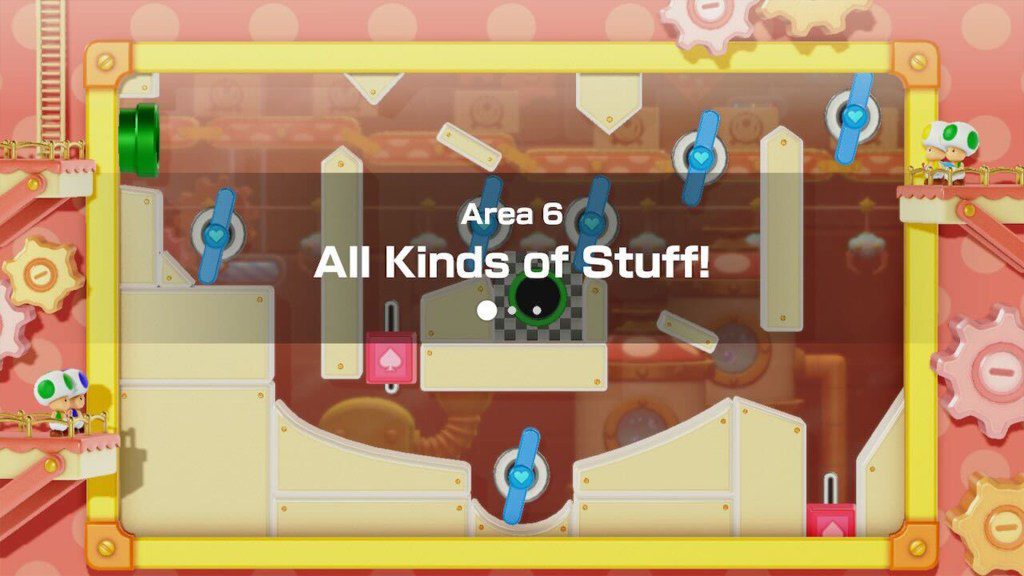
The sub-heading for “Mario Party’ as a whole.
Nintendo
Lastly, there’s Rhythm Kitchen. It’s a music-based mode wrapped in an Iron Kitchen styled framing. Players must go through sequential rounds to prepare meals as a team by cutting, skewering, plucking and whisking different ingredients to the beat. It’s a simple, yet effective use of motion controls that’s intuitive. Oddly enough, it works leaps and bounds better than the motion and rhythm based minigames you’ll find in the core experiences.
Outside of the library of distractions, there’s the main game mode. It’s just Mario Party, exactly as you remember it. Four players (or eight online). Two of the maps are from the original game, but the rest are brand new and are creatively designed overall. There’s a cute forest board where players can enrage the caterpillar-like Wiggler to change the terrain. There’s a race car track that makes things feel fast. There’s also a multi-tiered shopping mall that brings an uncanny feeling of dissonance to the Mario world (He just shops in a mall?).
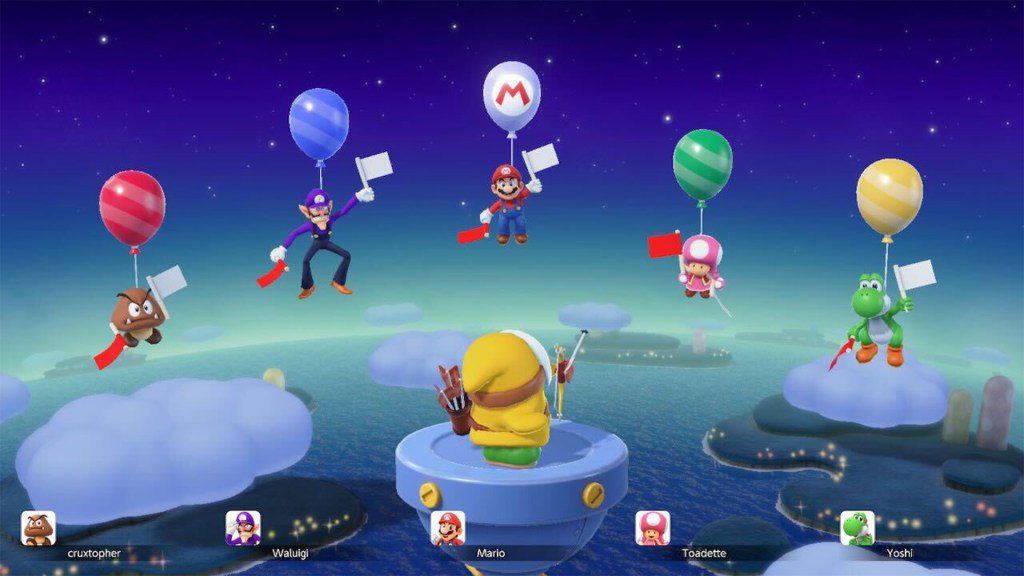
Every party in the Mushroom Kingdom ends with the firing squad.
Nintendo
One new feature is a pro mode, which allows players to ratchet up the tension with customization options, like reducing the chance element in certain dice rolls or games and making them more skill based. If you have friends who are irritatingly competitive, this is the mode for them. It’s the “no-item” style of play from Super Smash Bros. for Mario Party, intended to make the game hard for casuals and remove the blame from sore losers who claim that everyone else is only winning by luck.
One final feature that advances the overall package forward is available in the Party Plaza where you can choose your character and buy unlockable items. It’s called Party-Planner Trek, and it’s the best way to play Mario Party alone. It’s ostensibly a tutorial-meets-story mode, where a single player can explore each of the maps, doing small tasks for side characters with the goal of setting up the party for everyone. Completing missions like delivering food or items and completing minigame challenges awards mini-stars. Collecting 30 per level will commence a boss battle game — something very new that gives Mario Party the feeling of purpose, the classic gamification of busywork to make progress in an otherwise lateral game.
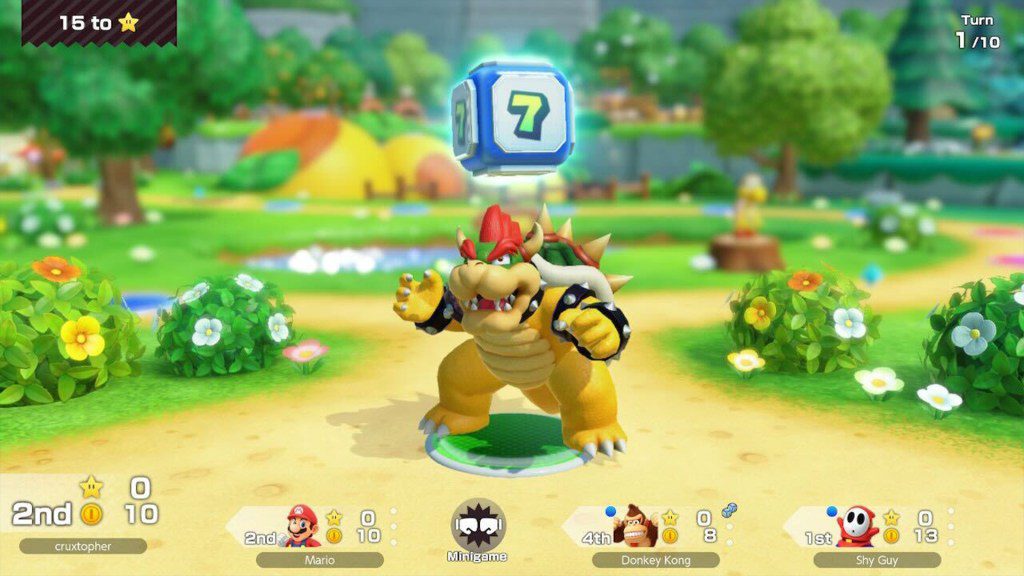
The base game is better than ever after years of mediocrity.
Nintendo
Party-Planner Trek gives players a reason to break out the game even when they’re just a party of one and feels like it truly gives Jamboree purpose beyond a fun time waster among friends.
It would’ve been easy for Nintendo to simply rest on their laurels again following the success of the nostalgia-bait Superstars, but Jamboree feels like a game designed with intent. On top of some solidly fleshed outside content, decent motion-based games, and a genuinely engaging single-player experience, it’s also just the best core Mario Party experience Nintendo has delivered in over 20 years.
It’s definitely one of the last big games we’ll see for the Nintendo Switch before its sunset, but if the franchise continues to evolve in this way, there’s surely a reason for Mario and friends to come back to this Big Chill-like party purgatory again and again.


